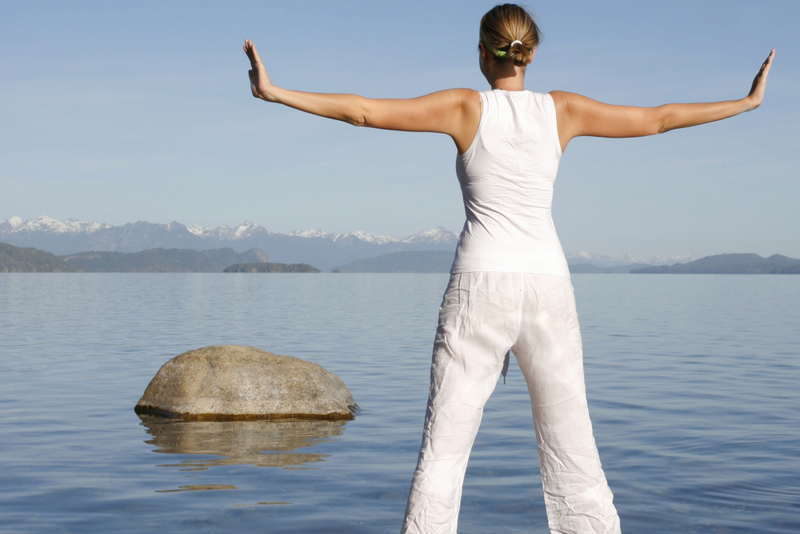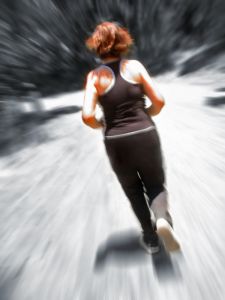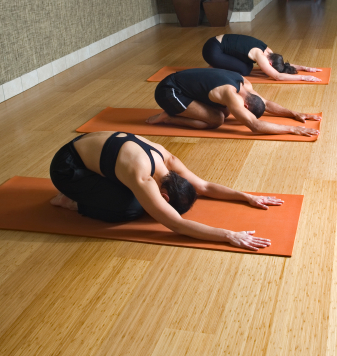
Stress, Relaxation, and the Impact on our Health
 During stressful events – be they physically or emotionally stressful – our bodies produce large amounts of epinephrine (adrenaline) to prepare our bodies to take action. This is commonly known as the fight-or-flight response.
During stressful events – be they physically or emotionally stressful – our bodies produce large amounts of epinephrine (adrenaline) to prepare our bodies to take action. This is commonly known as the fight-or-flight response.
On the other hand, when the body and mind are relaxed the body releases chemicals that reduce action of the nervous system – eliciting what is called the relaxation response.
The physical responses to stress and relaxation are exact opposites (as shown in the chart below.)
Stress |
Relaxation |
Increased Heart rate |
Decreased Heart rate |
Increased Respiratory rate |
Decreased Respiratory rate |
Increased Muscle tone/ tension |
Decreased Muscle tone/ tension |
Increased Metabolic rate |
Decreased Metabolic rate |
Increased Stress hormones (cortisol) |
Decreased Stress hormones (cortisol) |
Decreased Immune function |
Increased Immune function |
As you see in the chart, many of the symptoms of stress are those that ultimately lead to disease and poor health:
- Increased heart rate can lead to hypertension and heart attacks
- Increased muscle tone can lead to low back pain, joint pain and headaches
- Increased stress hormones (cortisol) can lead to adrenal fatigue, abdominal weight gain and diabetes
- Decreased immune function can increase the risk of illness and chronic infections
The Relaxation Response – Taking Back Your Health
There are many ways to elicit the relaxation response. The best method is to try a couple of techniques and find one that suits you and your daily lifestyle. It is important to remember that the relaxation response can be learned but practice is required for the body to benefit from it. Regular use of relaxation techniques results in long-term physiological changes that last throughout the day, not only during the time that the relaxation technique is being practiced.
More than 3000 studies have been done that show the beneficial effects of relaxation on health. The use of relaxation techniques is very important for people suffering with ill health because more than 60% of doctor visits are stress related. A brief list of common conditions for which relaxation has been found useful is found below.
| Conditions that Benefit from the Relaxation Response |
| Anger, anxiety, and hostility |
| Asthma |
| Dermatological conditions – eczema, psoriasis, acne |
| Depression |
| Diabetes |
| Digestive complaints – dyspepsia, ulcers, GERD |
| Headaches – migraine, tension |
| Hypertension |
| Infertility |
| Insomnia |
| Irregular heart beats |
| Irritable bowel syndrome |
| Pain |
| Premenstrual syndrome |
| Raynaud’s disease |
| Rheumatoid arthritis |
| Smoking cessation |
Common Themes in Relaxation Techniques
The mind and the body are intricately involved and inseparable. What affects one, affects the other. It is our mind’s thoughts that trigger the stress-induced physiological changes that can result in poor health. Mental focus is a common theme in all relaxation techniques.
Meditation focuses on a mantra, yoga focuses on a body posture (asana) or breath (prana), guided imagery focuses on an image, and progressive muscle relaxation focuses on the muscles. Relaxation does not need to be as formal as these techniques – it may be simply focusing on a hobby such as painting, playing an instrument, or tending a garden. The important thing is to bring our mind into focus in our present moment. When the mind begins to wander, acknowledge and accept that it has wandered and bring the attention back to the activity at hand. Focusing our mind on the present frees the mind from its usual stressful thoughts, such as worry, planning, thinking, and reasoning.
Relaxation and Aerobic Exercise
 “I don’t have enough time” is the most common reason people give for why they don’t exercise and also for why they don’t practice relaxation techniques. The good news is that exercise and relaxation can be combined. By focusing on a thought or phrase while performing aerobic exercise (such as jogging, riding a stationary bike, or using an elliptical) stimulates the relaxation response.
“I don’t have enough time” is the most common reason people give for why they don’t exercise and also for why they don’t practice relaxation techniques. The good news is that exercise and relaxation can be combined. By focusing on a thought or phrase while performing aerobic exercise (such as jogging, riding a stationary bike, or using an elliptical) stimulates the relaxation response.
So if you don’t have time every day to exercise for 30 minutes, meditate for 20 minutes, and spend quality time with your family consider combining exercise and relaxation to use your time more efficiently.
Relaxation Techniques – the Basics
Each of the various relaxation techniques presented below results in the same physiological changes in our body – lower heart rate, lower blood pressure, lower respiration rate, less muscle tension, decreased metabolic rate, and increased immune function. There are many different techniques that can be used for the desired outcome.
Breathing Exercises
The foundation of most relaxation techniques.
One method:
Place one hand on the chest and the other hand on the abdomen.
Take a slow, deep breath – as if sucking in all the air in the room
While taking the deep breath the hand on the abdomen should rise higher than the hand on the chest
Hold the breath for a count of seven then exhale to a count of 14
Repeat for a total of five breaths.
Do this exercise three times daily
Transcendental Meditation
To prevent distracting thoughts a mantra (word or sound) is repeated over and over while sitting in a comfortable position.
If a distracting thought comes to mind, acknowledge it, accept it, and let it go while bringing the focus back to the mantra.
For more information on transcendental meditation – www.tm.org
Mindfulness Meditation
The philosophy of living in the moment. Uses several techniques, including the body scan.
The body scan involves performing relaxation breathing exercises while lying or sitting. The mind progressively focuses on different parts of the body. Where any unusual sensations are felt the mind intentionally and nonjudgmentally acknowledges the seansation before moving on to another part of the body.
This technique allows us to better understand how our bodies feels and enables us to better cope with pain.
For more information read: Jon Kabat-Zinn: Full Catastrophe Living (1990)
Progressive Muscle Relaxation
A form of relaxation where you learn to notice the difference in feeling between a tense muscle and a relaxed muscle.
Lying or sitting comfortably you start by tensing the whole body from head to toe. While doing this take notice of the feeling of tightness and tension.
Then take a deep breath in, and while exhaling allow the tension to release and the muscles to relax.
Then starting at the feet, tense and release each muscle group (feet, legs, hips, abdomen, chest, shoulders, back, arms, hands) individually following each group with a relaxing breath.
For more info: www.amsu.org/healingthehealer/musclerelaxation.cfm
Guided Imagery
Using visualization of images to create a relaxed state. You can self-guide yourself through imagery by thinking in detail of a time and place that is (or was) peaceful and comforting.
This approach is best used in conjunction with relaxation breathing exercise.
Many CDs are available for guided visualizations. Some good options are available at www.drmiller.com and www.healthjourneys.com
Yoga has been practiced for thousands of years. It is the combination of breathing (pranayama), body postures (asanas) and meditation to maintain balance and health. Regular practice induces relaxation as well as many physical benefits.
For best results a class should be taken in order to learn proper positioning and breathing techniques.
Tai Chi
An ancient Chinese martial art that uses slow, graceful movements combined with inner mindfulness and relaxing breathing techniques to bring balance to the mind, body, and spirit.
As with yoga, a class should be taken to learn proper technique and sequences of movements.
Qi Gong
A traditional Chinese practice that uses controlled breathing in combination with movement and meditation. May be combined with Tai chi. Classes are available.
Remember, no matter what technique you use to achieve the relaxation response, continue to practice the technique and it will become easier and easier to achieve relaxation and reap the health benefits of being relaxed.
| Peace. It does not mean to be in a place where there is no noise, trouble or hard work. It means to be in the midst of those things and still be calm in your heart.
—Unknown |



Following proper diet schedule is one of the best natural ways to cure insomnia troubles.
For instance, a child’s peers may ridicule him because he has played poorly on the sport’s team, though he
has performed to his full potential.